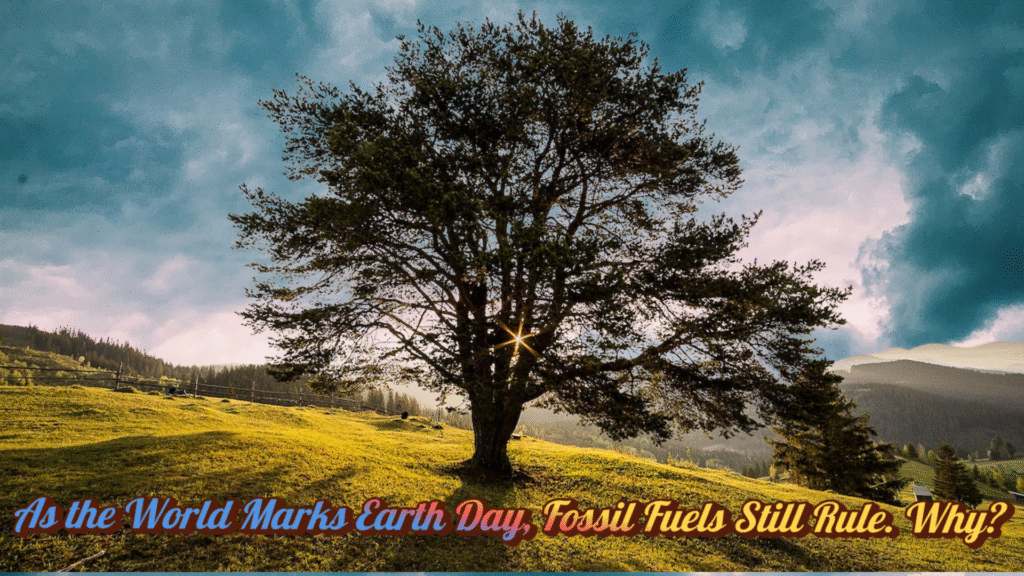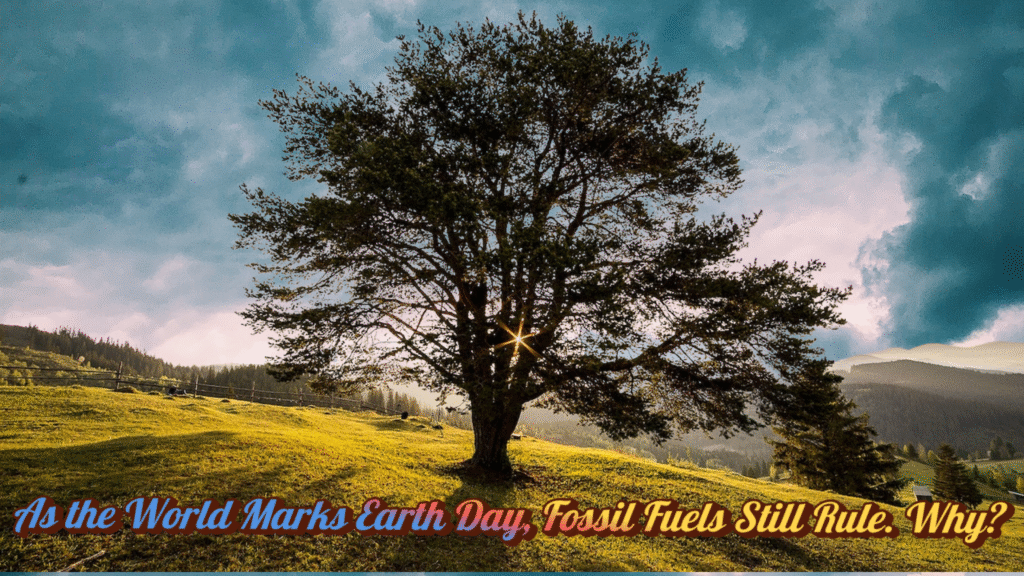The Climate Paradox of Our Time
As world leaders gather for Earth Day 2025 ceremonies, a uncomfortable truth looms over the celebrations: global fossil fuel consumption has reached another record high. Despite dire warnings from scientists and increasingly visible climate disasters, the world remains stubbornly dependent on oil, coal, and gas. This paradox defines our era – how can environmental awareness be at an all-time high while fossil fuel use continues to grow?
The Numbers Tell the Story
The latest International Energy Agency report reveals sobering statistics:
-
Global oil demand has climbed to 104 million barrels per day, up 2% from 2024
-
Coal consumption saw an unexpected 1.5% increase last year
-
Natural gas remains the fastest growing fossil fuel, with LNG trade volumes up 8%
Perhaps most startling is that fossil fuels still account for 78% of global primary energy, barely down from 80% a decade ago. The much-touted energy transition appears stuck in neutral.
The Great Green Contradiction
Several factors explain this persistent fossil fuel dependence:
-
The Energy Security Imperative
The 2024 global energy crunch, triggered by Middle East conflicts and Russia’s gas cutoff to Europe, taught nations a harsh lesson about energy independence. Countries are now prioritizing secure supplies over climate goals. The U.S. has approved 15% more drilling permits in 2025 compared to pre-pandemic levels. -
The Developing World’s Dilemma
While Western nations debate climate policies, emerging economies face more immediate concerns. India’s coal production hit 1 billion tons for the first time in 2024 as it struggles to power its growing economy. Across Africa and Southeast Asia, new gas plants are being built faster than renewable projects. -
The Infrastructure Trap
Our civilization remains built around fossil fuels. From plastics to fertilizers to jet fuel, alternatives remain expensive or non-existent at scale. The average age of a coal plant in Asia is just 12 years – these assets won’t be retired anytime soon.
Green Shoots of Hope?
Some promising developments suggest change may be coming:
-
Renewable energy investment surpassed $700 billion in 2024
-
Electric vehicles now make up 25% of new car sales globally
-
Breakthroughs in grid-scale battery storage are solving intermittency issues
Yet these advances remain overshadowed by continued fossil fuel growth. The IEA warns that current policies put the world on track for 2.7°C of warming – far beyond the Paris Agreement targets.
As Earth Day 2025 passes, the fundamental question remains: Can we break our fossil fuel addiction before climate change breaks our civilization? The solutions exist – what’s lacking is the political will and economic transformation needed to implement them at sufficient speed and scale.
The next five years will be decisive. Either we’ll look back at 2025 as the year the transition finally accelerated, or as another missed opportunity in humanity’s faltering response to the climate crisis.
Is There Hope? The Fight for a Real Energy Transition
1. The Rise of Renewables (But Is It Enough?)
-
Solar and wind now cheaper than coal in most countries (Lazard).
-
EV sales are surging (1 in 5 new cars is electric).
-
Green hydrogen & nuclear advancements could fill gaps.
2. Legal & Activist Pressures Mounting
-
Climate lawsuits (e.g., Netherlands forcing Shell to cut emissions).
-
Youth protests (Fridays for Future) pushing leaders to act.
-
Investors dumping fossil fuel stocks for ESG funds.
3. Policy Shifts—Or Greenwashing?
-
EU’s Carbon Border Tax penalizes polluting imports.
-
U.S. Inflation Reduction Act pumps $369B into clean energy.
-
But loopholes let Big Oil keep drilling.
1.1 The Future of Amazon FBA Business in 2025: Trends, Challenges, and Opportunities
1.2 2025 Gaming Industry Trends and Updates
1.3Dropshipping in india – 2025


